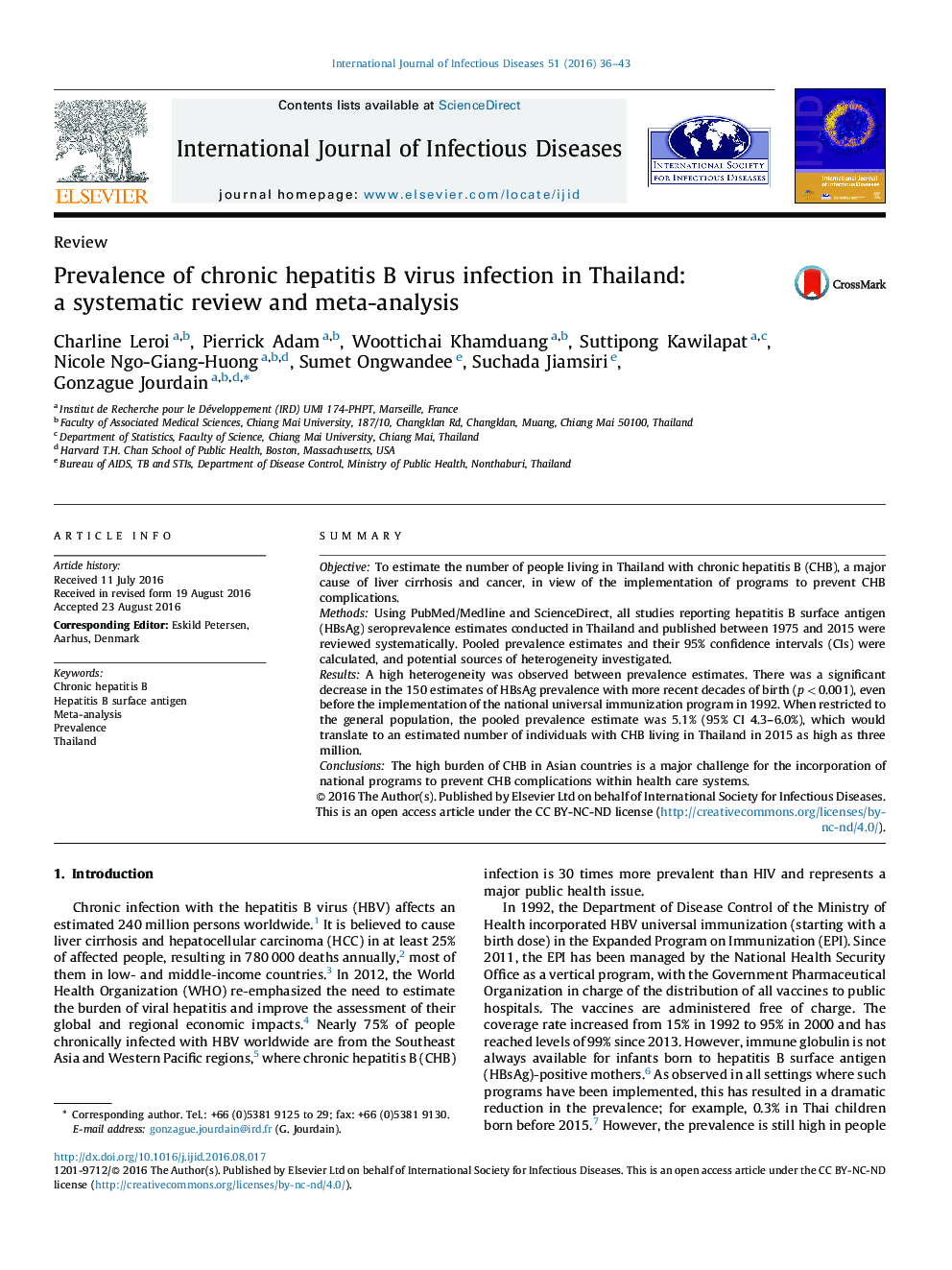| Article ID | Journal | Published Year | Pages | File Type |
|---|---|---|---|---|
| 3361575 | International Journal of Infectious Diseases | 2016 | 8 Pages |
•This is a meta-analysis of chronic hepatitis B prevalence studies in Thailand.•Chronic hepatitis B prevalence has decreased dramatically among people born after 1992.•There was a significant decrease even before the Thai immunization program was implemented in 1992.•Of the three million chronically infected people in 2015, 60% were older than 45 years.•The large number of individuals infected is a challenge for future treatment programs.
SummaryObjectiveTo estimate the number of people living in Thailand with chronic hepatitis B (CHB), a major cause of liver cirrhosis and cancer, in view of the implementation of programs to prevent CHB complications.MethodsUsing PubMed/Medline and ScienceDirect, all studies reporting hepatitis B surface antigen (HBsAg) seroprevalence estimates conducted in Thailand and published between 1975 and 2015 were reviewed systematically. Pooled prevalence estimates and their 95% confidence intervals (CIs) were calculated, and potential sources of heterogeneity investigated.ResultsA high heterogeneity was observed between prevalence estimates. There was a significant decrease in the 150 estimates of HBsAg prevalence with more recent decades of birth (p < 0.001), even before the implementation of the national universal immunization program in 1992. When restricted to the general population, the pooled prevalence estimate was 5.1% (95% CI 4.3–6.0%), which would translate to an estimated number of individuals with CHB living in Thailand in 2015 as high as three million.ConclusionsThe high burden of CHB in Asian countries is a major challenge for the incorporation of national programs to prevent CHB complications within health care systems.
